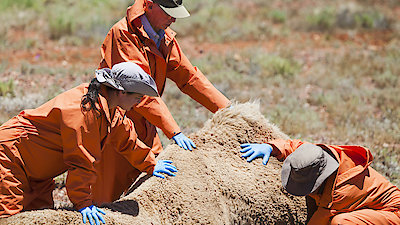
Ep 6. Camel
- June 27, 2012
The sixth episode of season one of Inside Nature's Giants takes a deep dive into the world of camels. The majestic and enigmatic creatures are explored through a dissection of a female Bactrian camel that died at a zoo of old age, giving the team of scientists and experts a unique opportunity to explore and understand the inner workings of this animal.
Led by presenter Mark Evans, the team begins by examining the camel's hump, which is integral to the animal's survival in harsh desert environments. The hump is found to be made up of a combination of fat and fibrous tissue, which acts as a source of energy and water, respectively. The team investigates the hump's blood supply and its microscopic structure to understand how it enables camels to survive for long periods without food or water.
Next, Inside Nature's Giants delves into the camel's feet and legs, which are adapted for life in the desert. The team watches in awe as the camel's hoof expands when it puts its weight on the ground, which helps to distribute weight and prevent it from sinking into the sand. The camel's legs are also incredibly strong, enabling it to carry heavy loads and cover great distances across the desert.
The team then turns its attention to the camel's stomach, which is divided into four compartments. They observe how each compartment plays a unique role in digesting tough, fibrous vegetation, and how the camel's saliva helps to break it down further. But the most remarkable aspect of the camel's digestive system is its ability to recycle its own urine, converting it back into water and preventing significant water loss in the harsh desert environment.
Inside Nature's Giants also explores the camel's skeletons, which are surprisingly light, despite being large animals. The team examines the camel's cervical vertebrae, which have grown to enable the animal to hold its head up high and reach high branches to feed on leaves. They also explore the camel's ribcage and lungs, which have adapted to enable the animal to breathe more efficiently in the desert.
Finally, the team dissects the camel's reproductive system, giving viewers a rare insight into the inner workings of the female camel's reproductive cycle. With female camels able to store male sperm for extended periods, the team explores how this enables the animal to reproduce in harsh desert environments when resources are scarce.
Throughout the episode, Inside Nature's Giants provides a fascinating and in-depth look into just how remarkable the camel is as an animal, and how it has adapted over thousands of years to survive in some of the harshest environments on Earth. With unprecedented access to a camel's anatomy, the team provides incredible insight into how the animal functions and ultimately, how it has come to thrive in the desert for so long.
